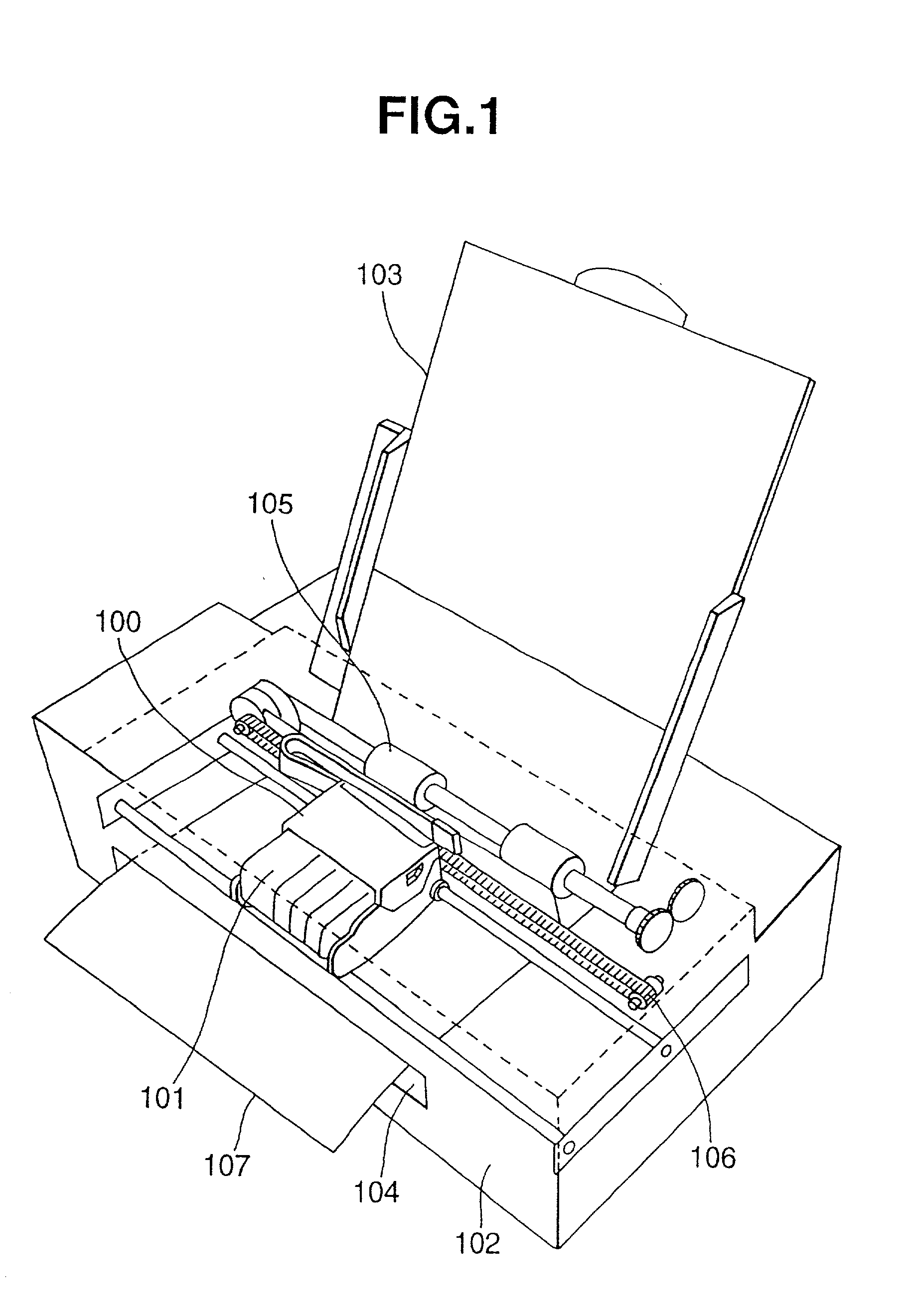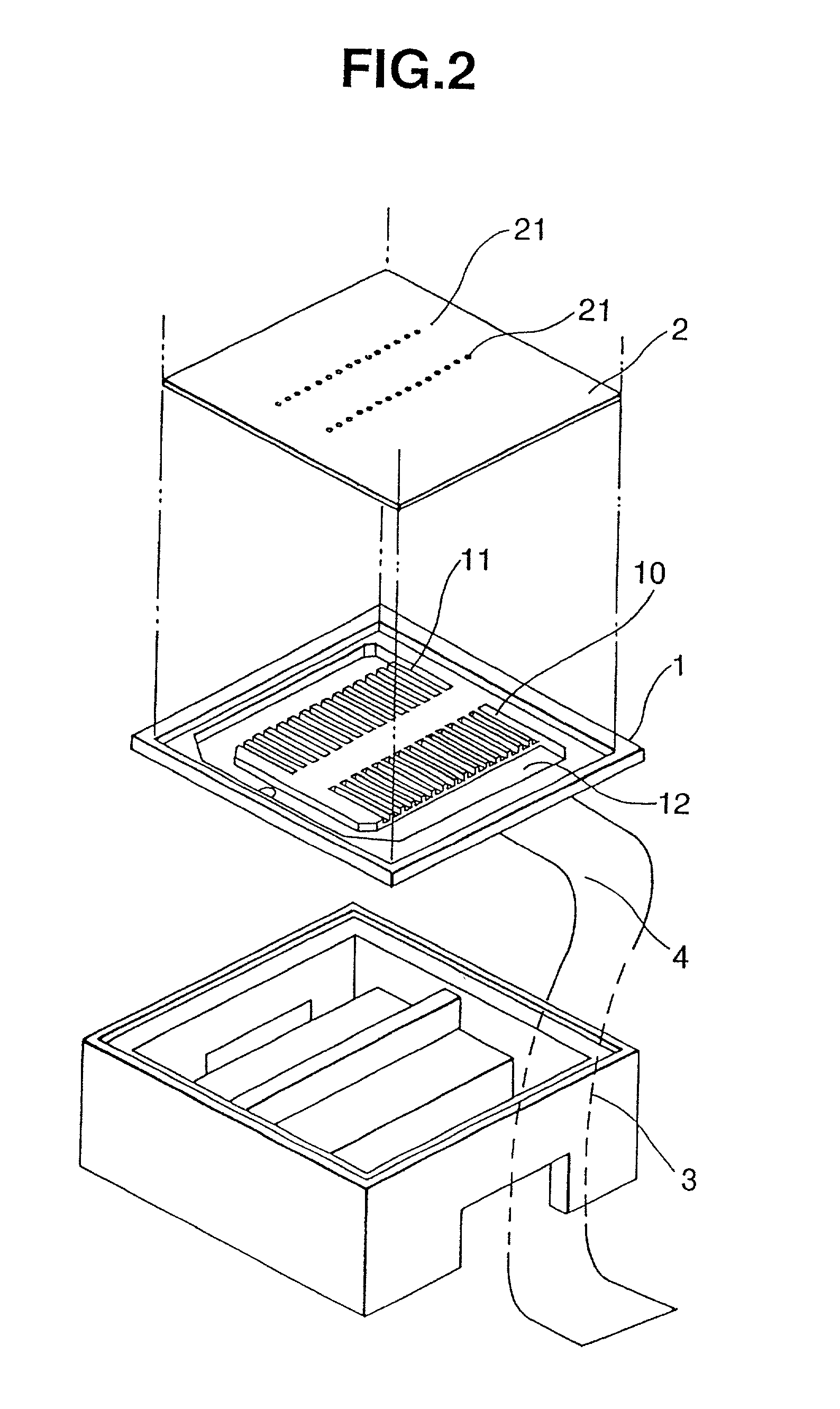Method for manufactuing ferroelectric thin film device, ink jet recording head, and ink jet printer
a technology of ferroelectric thin film and ink jet printing, which is applied in the direction of printing, nanotechnology, transistors, etc., can solve the problems of affecting the operation of the bottom electrode, the bottom electrode taking in oxygen and swelling in the course of the baking of the pzt film, and the bottom electrode becoming hard and brittl
- Summary
- Abstract
- Description
- Claims
- Application Information
AI Technical Summary
Benefits of technology
Problems solved by technology
Method used
Image
Examples
embodiment 5
of the Invention
[0144] This embodiment relates to an electromechanical transducer formed at a relatively low temperature, to a method for manufacturing this electromechanical transducer, and to an ink jet recording head and ink jet printer that make use of the same.
[0145] FIG. 16 is a cross sectional diagram of a layer structure, in which the electromechanical transducer portion of an ink jet recording head in this embodiment has been enlarged.
[0146] As shown in this figure, an electromechanical transducer 80 comprises an interlayer 92, an adhesive layer 81, a bottom electrode 82, a ferroelectric thin film (piezoelectric film) 83, and a top electrode 84, all laminated over an oxide film 91 that forms the installation surface.
[0147] The interlayer 92 is an elastic layer, and together with the oxide film 91, constitutes a diaphragm film 70. The interlayer 92 is formed from a compound selected from the group consisting of zirconium oxide, tantalum oxide, silicon nitride, and aluminum o...
embodiment 6
of the Invention
[0172] This embodiment relates to the structure of an electromechanical transducer manufactured when baking is performed at a temperature over 750.degree. C. in the manufacturing process of Embodiment 5.
[0173] FIG. 18 is a cross sectional diagram of the structure of a layer structure, in which the electromechanical transducer portion of an ink jet recording head in this embodiment has been enlarged.
[0174] As shown in this figure, an electromechanical transducer 90 comprises an interlayer 92, an adhesive layer 81, a bottom electrode 85, a ferroelectric thin film (piezoelectric film) 83, and a top electrode 84, all laminated over an oxide film 91 that forms the installation surface.
[0175] The interlayer 92, adhesive layer 81, ferroelectric thin film 83, and top electrode 84 are the same as in Embodiment 5, and therefore will not be described in detail.
[0176] The bottom electrode 85 consists of a first layer 826 and a second layer 827. The first layer 826 and second lay...
working example
[0180] An example of manufacturing an electromechanical transducer will now be described through reference to FIG. 19. The baking step in this manufacturing method is different from that described for FIG. 17. The rest of the steps, such as the oxide film formation step (FIG. 19A, the interlayer formation step (FIG. 19B), the bottom electrode formation step (FIG. 19C), the ferroelectric thin film formation step (FIG. 19D and E), and the top electrode formation step (FIG. 19F), are the same as in Embodiment 5 given above.
[0181] The baking step of this example is characterized in that the baking is performed at a temperature higher than 750.degree. C. Baking at this relatively high temperature causes the iridium of the first iridium layer 821 to diffuse, and causes this iridium to pass through the metal layer 822 and move almost completely into the second iridium layer 823.
[0182] Also, this heat treatment results in the ferroelectric thin film precursors forming a perovskite crystal s...
PUM
| Property | Measurement | Unit |
|---|---|---|
| thickness | aaaaa | aaaaa |
| thickness | aaaaa | aaaaa |
| thickness | aaaaa | aaaaa |
Abstract
Description
Claims
Application Information
 Login to View More
Login to View More - R&D
- Intellectual Property
- Life Sciences
- Materials
- Tech Scout
- Unparalleled Data Quality
- Higher Quality Content
- 60% Fewer Hallucinations
Browse by: Latest US Patents, China's latest patents, Technical Efficacy Thesaurus, Application Domain, Technology Topic, Popular Technical Reports.
© 2025 PatSnap. All rights reserved.Legal|Privacy policy|Modern Slavery Act Transparency Statement|Sitemap|About US| Contact US: help@patsnap.com



